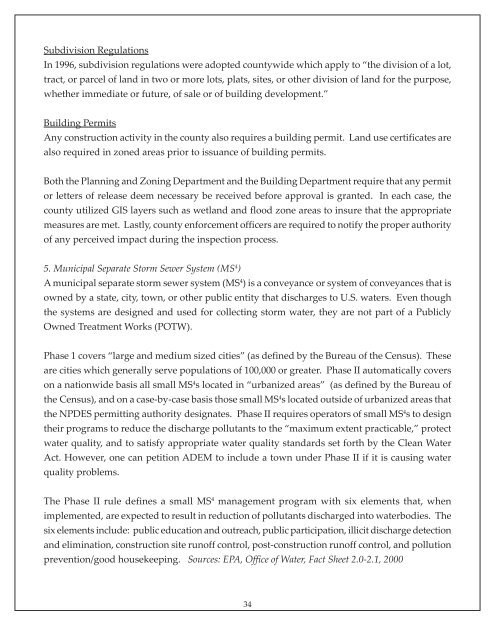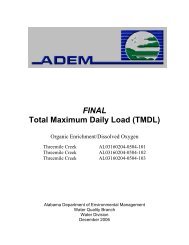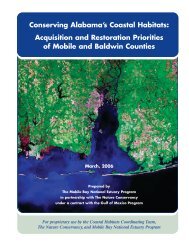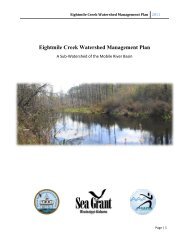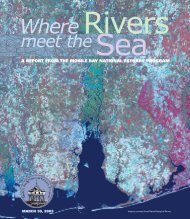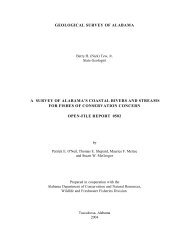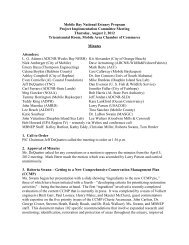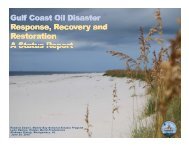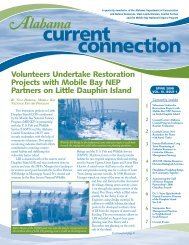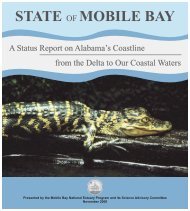Wolf Bay Plan Final - Mobile Bay National Estuary Program
Wolf Bay Plan Final - Mobile Bay National Estuary Program
Wolf Bay Plan Final - Mobile Bay National Estuary Program
- No tags were found...
Create successful ePaper yourself
Turn your PDF publications into a flip-book with our unique Google optimized e-Paper software.
Subdivision RegulationsIn 1996, subdivision regulations were adopted countywide which apply to “the division of a lot,tract, or parcel of land in two or more lots, plats, sites, or other division of land for the purpose,whether immediate or future, of sale or of building development.”Building PermitsAny construction activity in the county also requires a building permit. Land use certificates arealso required in zoned areas prior to issuance of building permits.Both the <strong>Plan</strong>ning and Zoning Department and the Building Department require that any permitor letters of release deem necessary be received before approval is granted. In each case, thecounty utilized GIS layers such as wetland and flood zone areas to insure that the appropriatemeasures are met. Lastly, county enforcement officers are required to notify the proper authorityof any perceived impact during the inspection process.5. Municipal Separate Storm Sewer System (MS 4 )A municipal separate storm sewer system (MS 4 ) is a conveyance or system of conveyances that isowned by a state, city, town, or other public entity that discharges to U.S. waters. Even thoughthe systems are designed and used for collecting storm water, they are not part of a PubliclyOwned Treatment Works (POTW).Phase 1 covers “large and medium sized cities” (as defined by the Bureau of the Census). Theseare cities which generally serve populations of 100,000 or greater. Phase II automatically coverson a nationwide basis all small MS 4 s located in “urbanized areas” (as defined by the Bureau ofthe Census), and on a case-by-case basis those small MS 4 s located outside of urbanized areas thatthe NPDES permitting authority designates. Phase II requires operators of small MS 4 s to designtheir programs to reduce the discharge pollutants to the “maximum extent practicable,” protectwater quality, and to satisfy appropriate water quality standards set forth by the Clean WaterAct. However, one can petition ADEM to include a town under Phase II if it is causing waterquality problems.The Phase II rule defines a small MS 4 management program with six elements that, whenimplemented, are expected to result in reduction of pollutants discharged into waterbodies. Thesix elements include: public education and outreach, public participation, illicit discharge detectionand elimination, construction site runoff control, post-construction runoff control, and pollutionprevention/good housekeeping. Sources: EPA, Office of Water, Fact Sheet 2.0-2.1, 200034


